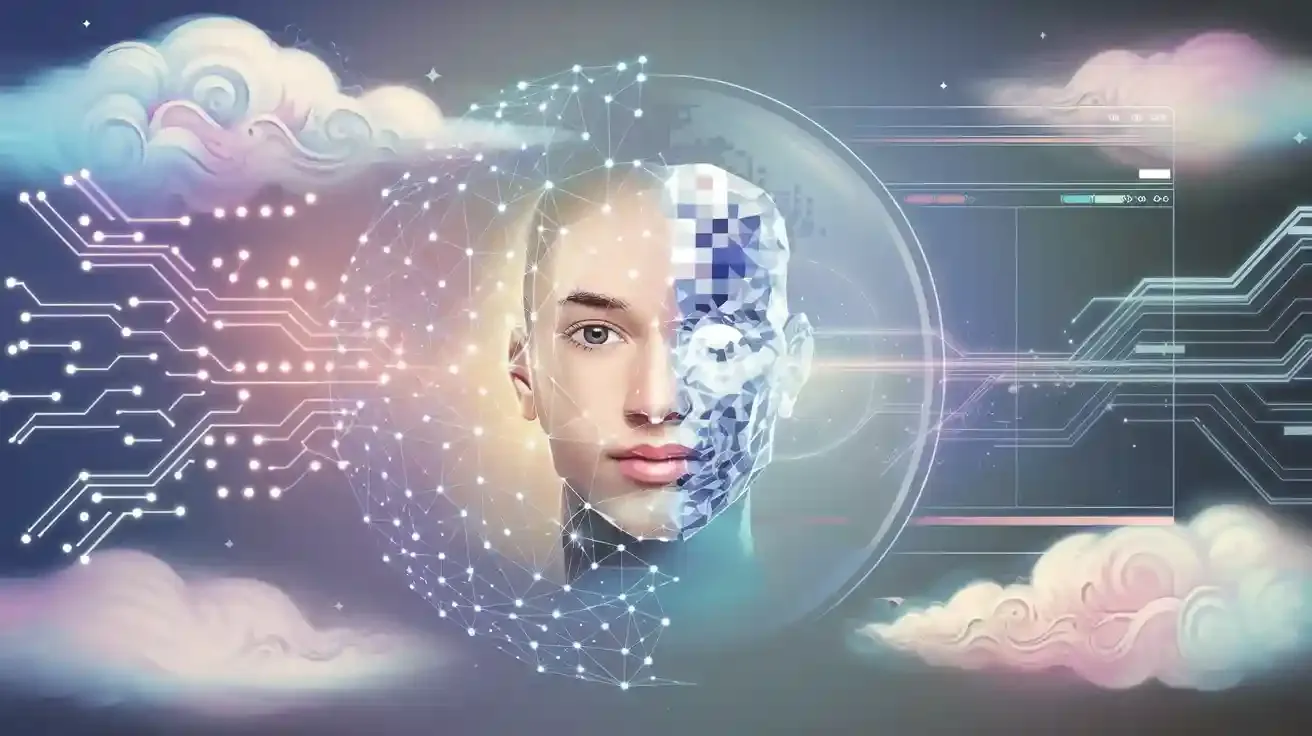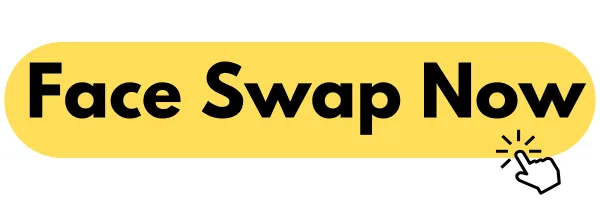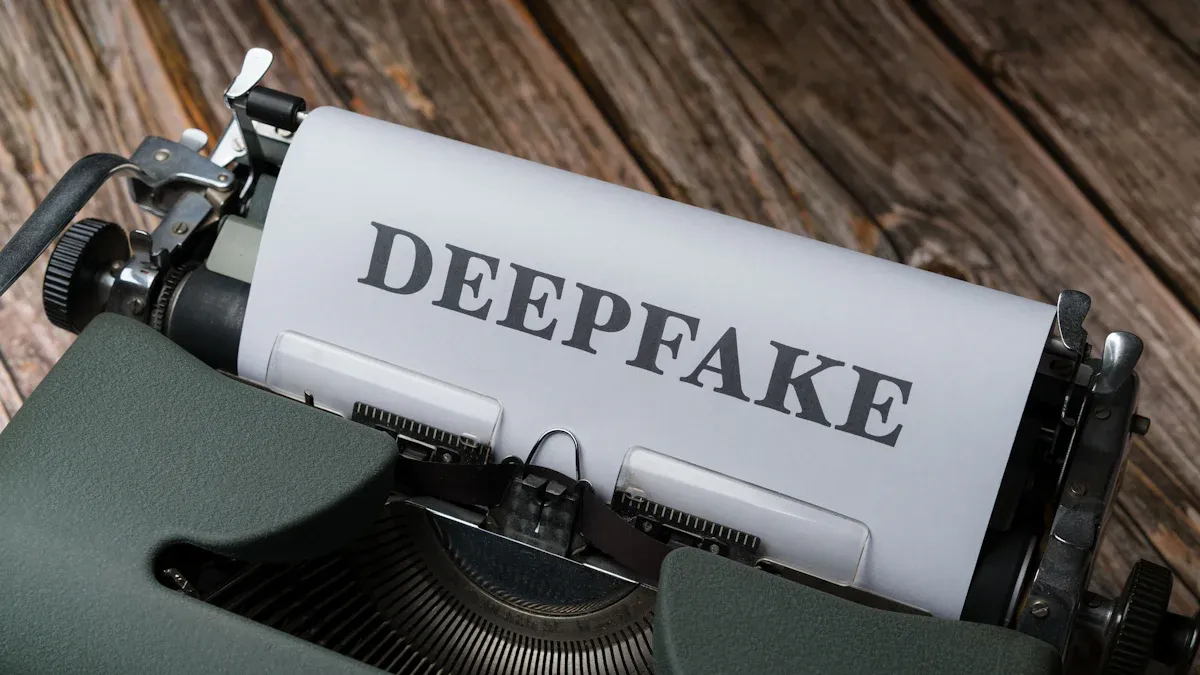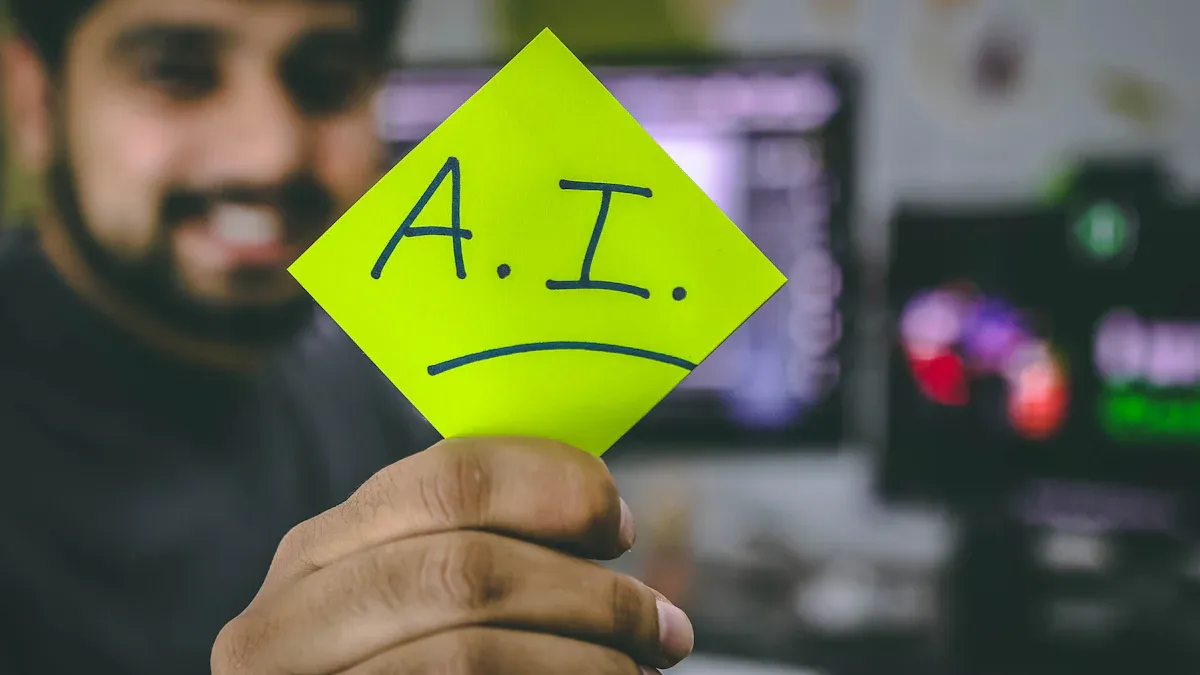The History and Evolution of AI Video Face Swap Technology
Discover how video face swap technology evolved from basic tools to AI-powered systems, its applications in media, and the ethical challenges it presents.

- Alexander Reed
- 15 min read

The story of video face swap technology started years ago. Researchers worked on face recognition and analysis for a long time. Early image editing tests led to easier, automated tools. AI changed face swapping by using deep learning and computer vision. This made face swaps look very real. People love this technology, but it also brings worries about privacy and consent. Learning how face swap technology began and its effects helps you use it wisely today.

Key Takeaways
Face swap started as simple tests and now uses smart AI tools for realistic results.
Deep learning and computer vision help make face swaps better and more real.
Generative Adversarial Networks (GANs) improve face swaps by using two systems to create and check realistic images.
Face swapping is changing entertainment, helping movies show amazing effects or bring back historical figures.
In schools, face swap technology makes learning fun and personal for students.
Privacy and consent are big concerns; using someone’s face without asking can cause problems.
Governments and social media are making rules to stop misuse and keep people safe.
Face swap technology has a bright future in many areas, but it must be used carefully and responsibly.
The Origins of Video Face Swap Technology

Image Source: pexels
Early Experiments in Face Swapping
Face swapping started with basic computer vision experiments. Researchers tried to change faces digitally using simple tools. These early tests helped create today’s face swap technology. In 2009, Neeraj Kumar, Jan-Michael Frahm, and Andrea Vedaldi made “face substitution.” This method replaced faces in pictures while keeping expressions the same. It made face swapping easier and more realistic.
Another big step came from Blanz et al., who created 3D face models from single images. They added new textures to faces and adjusted camera angles. These changes made face swaps look more lifelike. These experiments showed how face swapping could improve and inspired more research.
The Role of Computer Graphics in Face Swap Technology
Computer graphics were key to improving face swap technology. Early methods used 3D modeling and texture mapping for better results. Researchers could change facial features more accurately. For example, the 2009 “face substitution” method used graphics to keep expressions intact. This showed how graphics could make swaps look better.
Social media also pushed face swap tools forward. Apps like Instagram and Snapchat made people want easy and realistic swaps. Better computer vision and deep learning made these tools more advanced and popular.
The Introduction of AI in Face Swapping
AI changed face swapping by using deep learning techniques. These methods made swaps more accurate and realistic. Automated face swapping replaced manual processes, making it easier for users. AI tools could handle tricky tasks like keeping expressions and lighting consistent.
Deep learning, especially neural networks, helped AI learn facial features. By studying lots of data, AI got better at copying faces. This improved face swaps and opened new uses in areas like movies and education.
Technological Advancements in Face Swap Technology
The Role of Deep Learning and Neural Networks
Deep learning has changed face swapping by making it more accurate. Neural networks, like convolutional neural networks (CNNs), are very important. They help with tasks like finding face landmarks and matching poses. This ensures swapped faces fit perfectly in videos. For example, CNNs can track facial expressions, making swaps look natural.
Generative models, such as autoencoders, make the process easier. They adjust facial features and blend them automatically. This means less manual work and better results. Researchers like Nirkin et al. created systems for tough situations, like bad lighting or busy backgrounds. They use 3D face models and special networks for precise editing. These tools show how deep learning has improved face swapping.
Advances in Computer Vision for Face Swapping
Computer vision has made face swapping more advanced. Early methods, like “face substitution,” started with simple face alignment. Now, new technology makes swaps more detailed and accurate. Algorithms study large datasets to match skin tone, lighting, and other details perfectly.
Social media apps like Snapchat and Instagram helped improve these tools. Their face swap filters use smart algorithms for real-time effects. These features make face swapping fun and popular online. But computer vision is also used in research. It helps create tools to spot fake faces, which is important for solving ethical problems.
Generative Adversarial Networks (GANs) and Their Impact
Generative Adversarial Networks (GANs) have made face swaps look very real. GANs use two networks—a generator and a discriminator. The generator makes face swaps, and the discriminator checks if they look real. This teamwork improves the quality of the swaps over time.
One cool feature is adversarial loss, which focuses on small details like hair and facial features. Techniques like joint latent space learning help blend swapped faces smoothly. RS-GAN, for example, makes hair and face features look more natural. These tools need less expert help and work well for live uses in entertainment and education.
However, GANs also bring concerns. They can create fake videos that look real, raising privacy and consent issues. It’s important to think about these risks and use face swap tools responsibly.
The Rise and Impact of Deepfake Technology

Image Source: unsplash
What is Deepfake Technology?
Deepfake technology uses AI to make realistic videos and images. It swaps faces or changes voices using advanced tools. AI studies facial features, expressions, and movements to copy them. Algorithms learn from many images and videos to create lifelike results. Unlike old editing methods, deepfakes are faster and easier to make.
Experts warn about risks linked to deepfake technology. For example, fake faces can trick security systems like fingerprint scanners. These dangers show why strong cybersecurity is needed to protect digital systems.
How Deepfakes Changed Video Face Swap
Deepfakes improved video face swaps by making them look real. AI tools now map faces, blend images, and smooth transitions in videos. This makes face swapping easy, even for beginners. A study showed researchers made deepfakes for experiments without needing coding skills.
Movies use deepfakes for cheaper and better visual effects. Custom scenes and interactive media are now more common. AI advancements also allow live face swaps during broadcasts, opening new possibilities.
But deepfakes also bring ethical problems. They can spread lies or harm reputations. Many people want stricter rules to stop misuse of this technology.
How Deepfakes Affect Society
Deepfakes have changed industries like media and education. They help create new ideas but also cause problems. A study found fake content, including deepfakes, cost the world $78 billion in 2020. This shows how harmful misuse can be.
People are worried about deepfake technology. A survey found 90% of Americans fear its harmful effects. Deepfakes have been used to spread fake news, trick people, and commit fraud. More research is being done to stop these negative impacts.
Even with challenges, deepfakes keep improving. Knowing how they work helps you use them wisely and avoid risks.
Applications of Video Face Swap Technology
Changing Entertainment and Media
Face swapping has changed how movies and shows are made. It gives filmmakers new ways to tell stories. AI face swap tools help add faces into movies smoothly. Directors can make actors look younger or bring back historical figures. They can even recreate performances of people who have passed away. This saves money and time while allowing more creative ideas.
Face swapping also makes amazing visual effects that audiences love. Reports show face swap apps are now key for creating lifelike CGI. The table below shares important findings:
| Source | Key Insights |
|---|---|
| The Evolution of Face Swap Technology | Talks about future uses of face swapping in movies, focusing on its ability to create stunning effects. |
| The Evolution and Impact of Face Swap Videos | Explains how face swap videos became advanced tools for de-aging actors and recreating performances. |
| The Evolution of AI Face Swap Technology | Shows how AI has opened new doors in entertainment and creative media. |
Social media has also made face swap apps very popular. People enjoy using filters and effects, making face swapping a big part of today’s media.
New Ideas in Education and Training
Face swapping is now used in schools and training programs. It helps make learning fun and interactive. Teachers can use face swap videos to create exciting lessons. For example, students can see their faces in history reenactments. This makes learning more personal and easier to remember.
In job training, face swapping is helpful for practice. Medical students can swap faces with virtual patients to learn better. Companies use it for role-playing exercises in training sessions. These examples show how face swapping can improve learning and skill-building.
Marketing, Ads, and Social Media
Face swapping is a great tool for marketing and ads. Brands use it to make fun and personal campaigns. For example, companies can put customers’ faces in ads to make them feel special.
Social media apps also use face swapping to get people involved. Filters and effects are now common in viral ads. Studies show face swap tools are used in many areas like gaming, movies, and ads. This proves how important face swapping is for marketing.
Face swapping isn’t just for ads. Influencers and creators use it to make cool content. This keeps face swapping popular and a big part of social media trends today.
Emerging Uses in Healthcare and Research
Face swap technology is helping healthcare and research in new ways. It offers creative solutions for tough medical problems. Doctors now use it for diagnosis, treatment, and surgery planning. These tools are changing how patients get care.
One exciting use is in spotting nerve disorders and facial paralysis. Face swap tools study facial movements to find problems. For example, AI can track small changes in a patient’s face over time. This helps doctors understand conditions better and treat them more effectively.
Reconstructive surgery also benefits from face swap technology. Surgeons use it to plan surgeries with great detail. They can show patients how they might look after surgery. This builds trust and helps surgeons improve their methods. It also lowers risks and makes results more predictable.
Medical students are learning with face swap tools too. They practice on virtual patients with lifelike faces. This safe training helps them get ready for real-life situations. It improves their skills and boosts the care they can give.
Researchers are finding other creative uses for face swap tools. For example, they make realistic avatars for therapy. These avatars help people with anxiety or PTSD feel comfortable during treatment. This makes therapy more effective and less stressful.
AI is making face swap technology even better. It studies lots of data to create accurate simulations. This helps doctors make important decisions with confidence. As the technology grows, it will bring more amazing changes to healthcare.
Ethical and Legal Challenges of Face Swapping
The Threat of Misinformation and Deepfake Abuse
Face swap tools, like deepfakes, can create fake videos. These tools are useful but also risky. People use deepfakes to spread lies or trick others. For example, fake news made with deepfakes cost $78 billion in 2020. These videos can harm reputations, affect elections, or cause problems in society.
Studies show deepfakes can lead to cyberbullying or harassment. They can also trick security systems, creating risks for everyone. Experts say we need better tools to detect deepfakes. Teaching people about the dangers of deepfakes is also very important.
Privacy Concerns and Consent in Face Swap Technology
AI face swap tools raise big questions about privacy. Using someone’s face without asking them is wrong. It can upset people and hurt their feelings. This is worse when fake videos are made to harm someone.
Privacy and consent are key issues with face swapping. Using someone’s face for money without asking is unfair. It also breaks rules about ownership of personal images. Laws should require permission before using someone’s face in AI content. These rules can help make face swapping safer and fairer.
Legal and Regulatory Efforts to Address Challenges
Governments are making rules to stop face swap misuse. Some places have banned deepfakes without permission. Laws like GDPR in Europe and CCPA in California protect privacy. These rules help keep personal data safe.
Social media platforms are also helping. They remove harmful deepfakes to protect users. But laws and public education are still needed. By solving these problems, we can use face swap tools safely and responsibly.
AI Tools for Spotting Deepfake Content
Finding deepfake content is now a big challenge. As deepfake technology improves, spotting fake videos and images gets harder. AI tools are very important for this job. They check facial details, voice sounds, and movements to find fakes. Smart algorithms help stop the misuse of face swap technology.
Some AI methods look for odd changes in biometric data. For example, detection systems study tiny pixel errors or strange face movements. These systems learn from many real and fake examples. This helps them tell the difference between real and fake media with great accuracy.
Cybersecurity experts warn about deepfake risks to security systems. The table below shows problems that AI tools try to fix:
| Risk | Description |
|---|---|
| Spoofing Attacks | Deepfakes can trick facial recognition by showing fake faces. |
| Evasion Techniques | Deepfakes copy real user actions to avoid being caught. |
| Template Blending | Fake faces mix features from different people to fool checks. |
| Manipulation of Biometric Data Storage | Hackers can replace real data with fake data in databases. |
| Scale and Accessibility of Attacks | Deepfake tools are easier to get, making attacks more common. |
AI fights these problems using special techniques. Adversarial training shows detection models many fake examples. This helps them spot small signs of fakes. Forensic analysis looks for clues like bad lighting or weird eye movements.
Social media and video platforms now use AI tools too. These tools check uploads for fakes to stop false information from spreading. Researchers are also making tools to catch deepfakes during live videos.
AI must keep improving to stay ahead of deepfake tricks. As deepfakes get better, detection tools need to adapt. Learning about these tools helps you see how AI protects digital spaces and stops face swap misuse.
Future Prospects of AI Video Face Swap Technology
Making Face Swaps More Realistic and Instant
The future of face swap tools is about making them super real. AI is improving to copy every small facial movement and expression. Tools like 3D face models and texture mapping started this progress. Now, deep learning makes face swaps look almost like real faces.
The face swap market is growing fast. In 2023, it was worth $1.59 billion. By 2031, it might reach $2.3 billion, growing at 2.89% each year. This shows how more people want realistic and instant face swap tools.
Tip: As AI gets better, expect live face swaps in videos. This will change entertainment, gaming, and online meetings.
Helping Different Industries in New Ways
Face swap tools are already changing many industries. In movies, they help make actors look younger or bring back historical figures. Social media and games use them for fun effects that keep users interested. These tools are making creative industries even better.
Outside of entertainment, face swaps are helping schools and hospitals. Teachers can make lessons fun by adding students’ faces to history scenes. In healthcare, doctors use face swaps to plan surgeries or study facial problems. These examples show how face swaps are helping people and sparking new ideas.
Using Technology Responsibly
As face swap tools improve, we must think about ethics. Realistic deepfakes can cause problems like privacy issues or misuse. Without rules, these risks could become bigger than the benefits.
“The ethical concerns of AI face swap tools show why we need rules. These rules should focus on privacy, consent, and stopping misuse while supporting innovation.”
Clear rules can make sure face swaps are used safely. Balancing new ideas with ethics will help us use this technology wisely. This way, face swaps can be amazing and safe for everyone.
The story of video face swap technology shows its growth. It started as simple tests and became an AI-powered tool. This change has improved entertainment and learning but raised concerns. People now talk about privacy, consent, and fake information. Solving these issues is important for using the technology wisely.
In the future, face swap tools will grow more popular. AI and machine learning will bring new ideas and better tools. Healthcare, gaming, and media will use these tools in exciting ways. But it’s important to balance new ideas with being responsible. This will help us use this amazing technology safely.
FAQ
What is AI video face swap technology?
AI video face swap replaces one face with another in videos. It uses AI to study facial features, expressions, and movements. This tool is used in movies, schools, and healthcare.
How does AI improve face swapping?
AI makes face swapping easier by automating hard tasks. It aligns faces, matches expressions, and adjusts lighting. Deep learning studies data to make swaps look smooth and real.
Are deepfakes and face swaps the same?
Deepfakes are a type of face swap made with AI. Regular face swaps are fun, but deepfakes use advanced methods. They can cause problems if misused.
Can face swap technology detect fake videos?
Yes, AI tools can find fake videos by spotting errors. They check for odd movements, bad lighting, or strange pixels. These tools help stop fake content from spreading.
Is face swap technology safe to use?
Face swap tools are safe if used the right way. Problems happen when faces are used without asking. Following rules about privacy makes it safer.
What industries benefit from face swap technology?
Face swapping helps movies, healthcare, schools, and ads. It creates cool effects, trains doctors, makes lessons fun, and personalizes ads.
How can you identify a deepfake?
You can spot deepfakes by looking for weird movements or lighting. Mismatched audio is another clue. AI tools also help find fake videos.
What is the future of AI video face swap technology?
The future includes more real and instant face swaps. It will change movies, games, and healthcare. Better rules and tools will handle ethical issues
- Tags:
- Video Face Swap